This post contains affiliate links. We earn commissions if you purchase products from retailers after clicking on a link from our site. As an Amazon Associate, we earn from qualifying purchases.
As you might expect, it turns out that the harmonica is not completely unique in its design. The harmonica uses a free reed system where a metal tine vibrates up and down from air passing over and under it creating its sound.
And there are actually a lot of instruments that do this exact same thing. Let’s jump in.
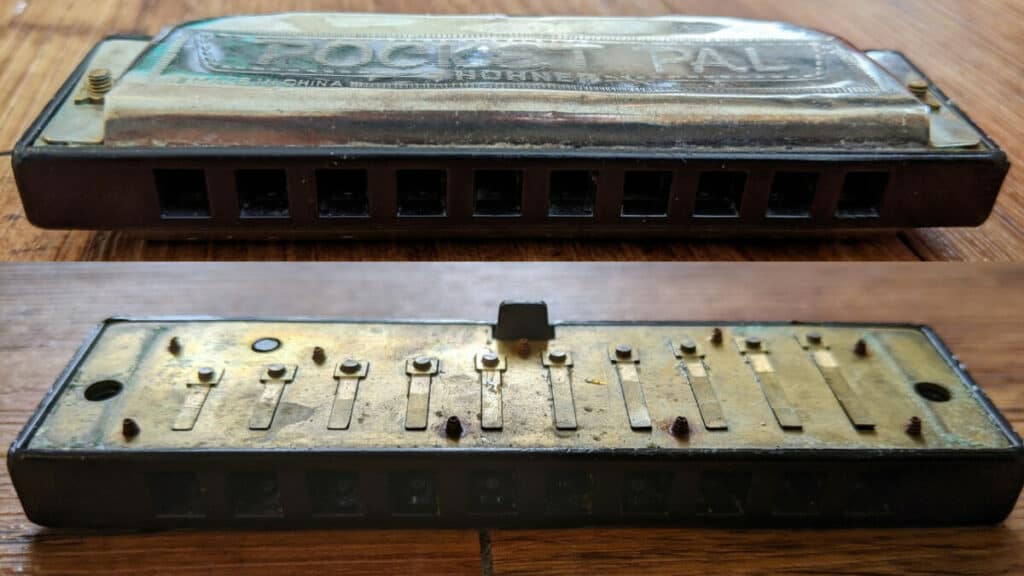
By the way, looking for recording equipment and musical instruments? Check out Sweetwater.com for microphones, monitors, audio interface or any other recording gear that you could ever need. (Affiliate Link)
Free Reed Instruments: Instruments that make their sound by air vibrating a reed which passes above and below a stationary frame.
Accordion
The accordion is one of the more well-known free-reed instruments. Like the harmonica, it has metal tines that vibrate up and down when air is passed over them making that distinct and beautiful sound.
However, what’s different from the accordion is where it gets the air.
Accordions use a sort of bellows that moves air when expanded and contracted. The air comes into the accordion when you stretch it out and it is released when you collapse it, and sound is made as the air moves in both directions.
Accordions have been a long time in the making, and because of that, there are many different variations on a similar concept.
- Concertina
- Melodeon
- Organetto
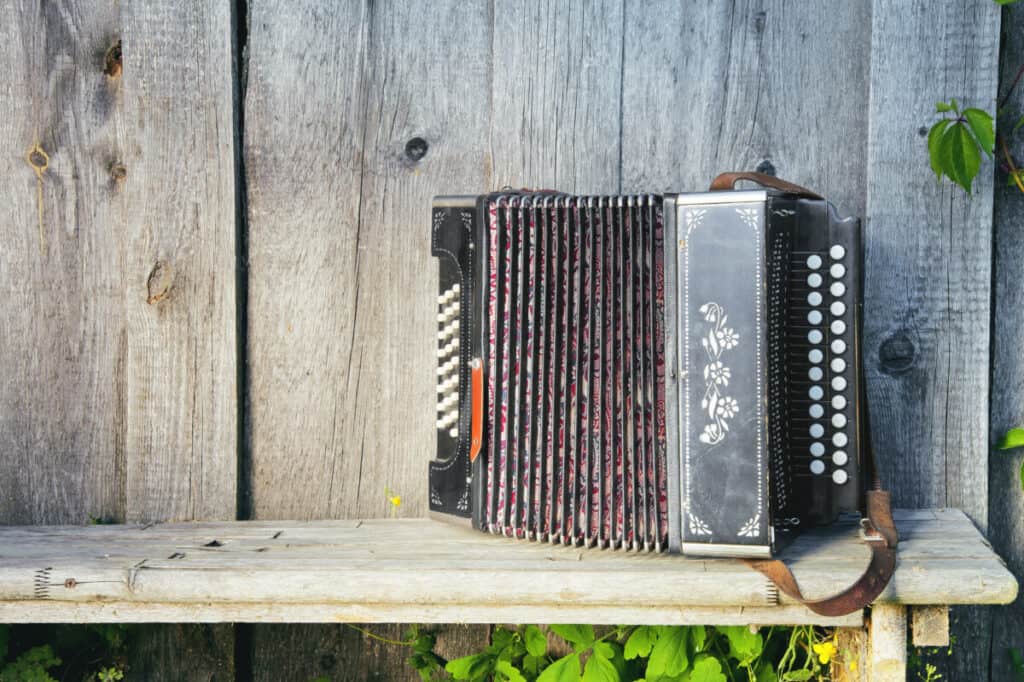
Melodica
You know, when you look at the melodica, it kind of looks like a toy. Indeed, the melodica (in some countries) is the equivalent to the recorder (in some countries) in schools–it’s an entry-level instrument that everyone plays and hates to some degree or another.
(need a refresher on what a recorder is? Check out our article here)
But despite that, I actually love its sound. The melodica is also a free-reed instrument and has that buzzy, beautiful quality that the harmonica has.
The melodica is played by blowing air through the side of the instrument or via a hose attachment, in this way it’s very similar to the harmonica, as you use your breath to move the reeds up and down.
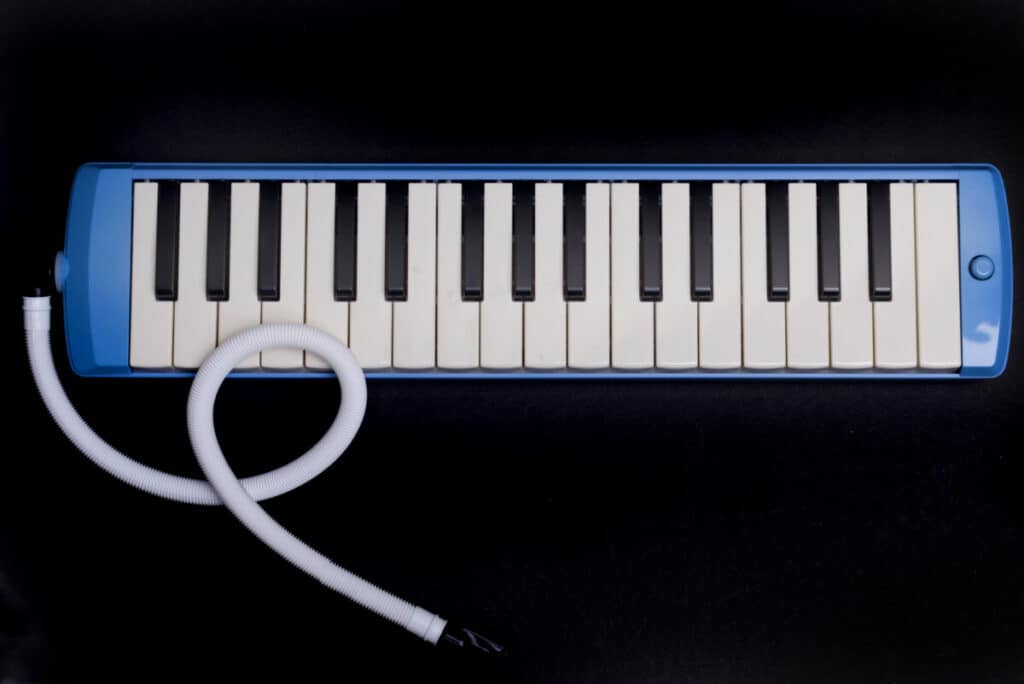
In fact, this song heavily features the Melodica and I love it:
Doesn’t it just want to make you go get your shoes on and just go somewhere? Love this song, too.
Jaw Harp
Okay, this is a little bit different than what you might have been expecting. How does a jaw harp have anything to do with a harmonica?
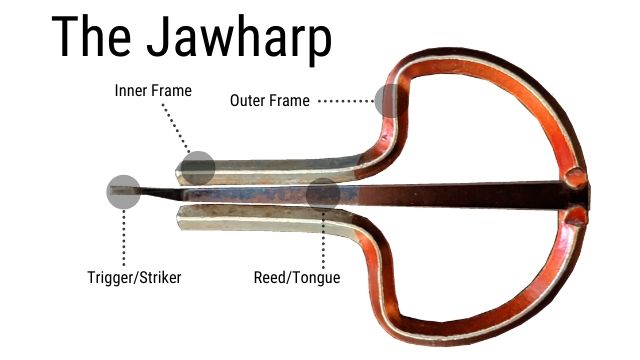
The Jaw harp is played by putting the instrument against your teeth and by flicking the metal reed through your teeth. Sound dangerous? Well, that’s because it kind of is. In fact, it takes some technique to play without hurting yourself. You can see my article on how to play the jaw harp with closeups of my face so you can really get a feel for how that’s done.
How is the harmonica similar to a jaw harp?
Well, the jaw harp also produces sound by a vibrating metal tine moving up and down against a stationary frame. It’s a single reed instrument, meaning you only get one pitch with a jaw harp, but don’t be fooled, because the player uses their mouth and throat as a resonance chamber, you can make a ton of different sounds with the jaw harp.
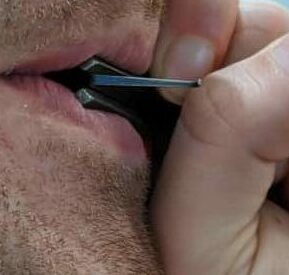
I demonstrate in my video here how you can play the jaw harp in such a way to make sounds very reminiscent of modern techno music:
Dan Moi
The Dan Moi is very similar to the jaw harp, but because of its modern design, these days, many dan mois today are often laser cut and so the tolerances are tight.
Additionally, a dan moi is meant to be placed against your lips and not your teeth as is a jaw harp. So… that’s one less thing to worry about busting your teeth. However, because the tolerances are so tight and the instrument so delicate, the tines are actually quite sharp and you can poke your mouth if you’re not careful.
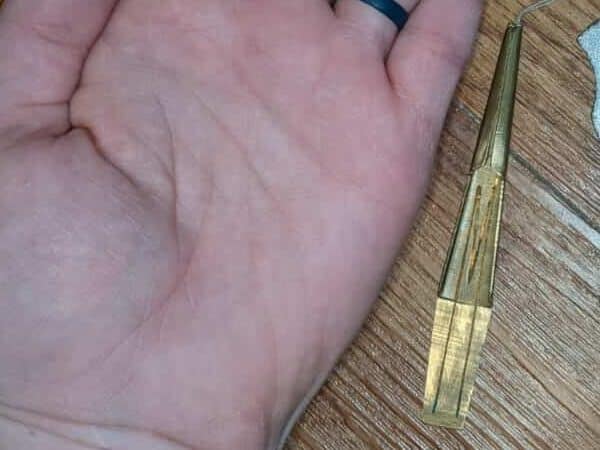
Pitch Pipe
You may never have wondered about this before, but have you ever seen an acapella group blow through a pitch pipe before launching into their song? (Nowadays everybody uses digital tuners so maybe you haven’t)
A pitch pipe is really just a very specific type of harmonica, where instead of being an instrument capable of amazing sound like a harmonica, it simply plays a pitch so you can tune your instrument or have a starting note (in the case of an acapella group)
Different pitch pipes work differently of course, but some variants use a free-reed similar to a harmonica.
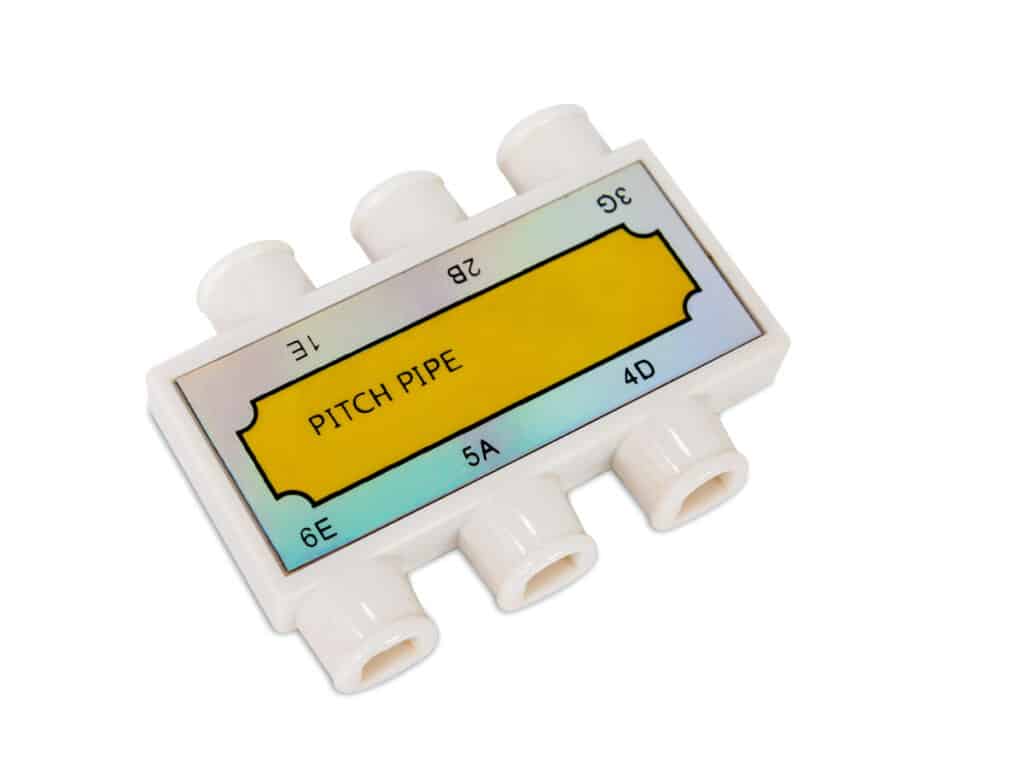
Maybe next time you should just get a harmonica instead of getting a pitch pipe! Then you can at least play a harmonica solo at your next gig.
Pump Organ
The pump organ is not something you see or hear frequently unless you’re watching some sort of period drama or something. It’s a beautiful instrument that as you listen to it you can definitely hear the reminiscent sounds of an accordion.
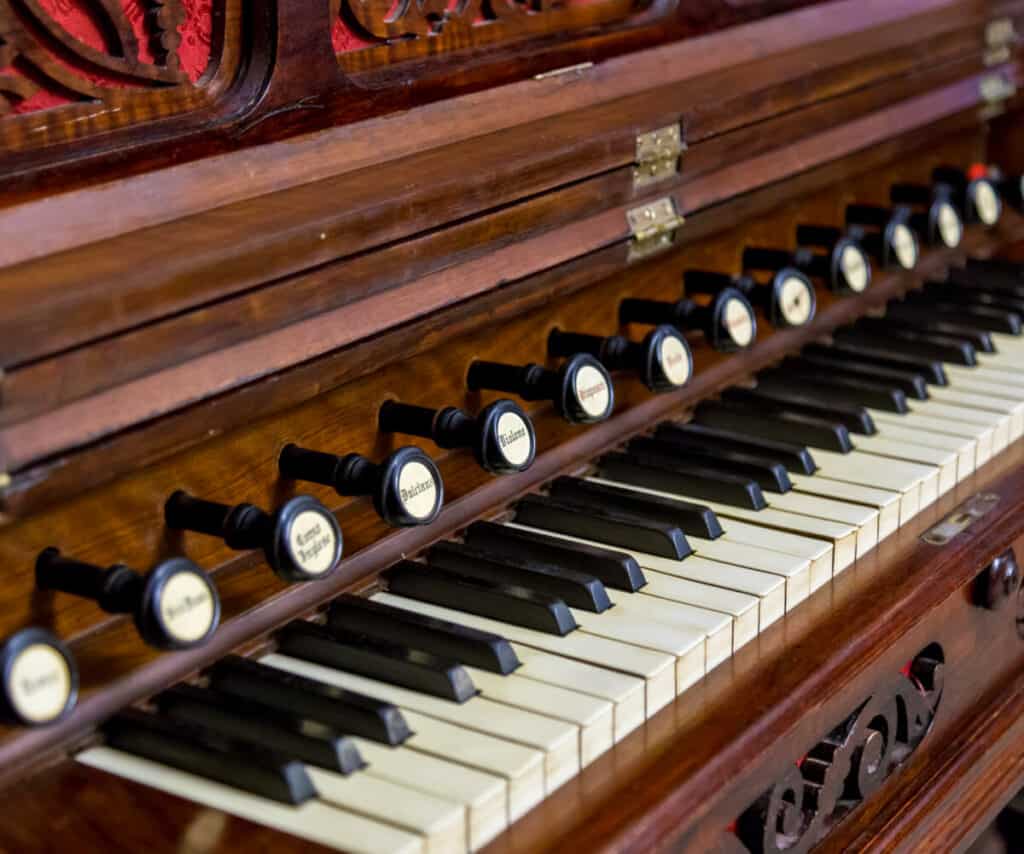
The reed organ, or pump organ as it’s called uses air over free reeds, similar to the harmonica, with the pump being manually powered or electrically powered.
The buttons you see on the instrument are what are called “stops” which either interrupt the pathways of the air which creates a different timbre, or it can activate or deactivate different mechanisms to create different effects such as tremolo.
You can think of the stops like guitar pedals before electric guitars were a thing, each stop creating a different sound for the instrument.
Here’s a beautiful demonstration of the pump organ:
It has a haunting sound, which I imagine is perfect for a polka or for a folk horror film.
Alternate Harmonicas
Now, this may be cheating, but you probably didn’t know that the harmonica is really a broad class of instrument and that there are several types of harmonicas all using a similar design but with fantastic expansion of capabilities.
Chromatic
You may not know this, but there are actually harmonicas that are chromatic, meaning they can play all 12 notes of the scale.
Chromatic harmonicas actually work because of a pretty rad mechanism. The chromatic harmonica has a knob that you can pull and it will adjust the air pathways just enough to change the pitch so you can then play all 12 notes of the scale.
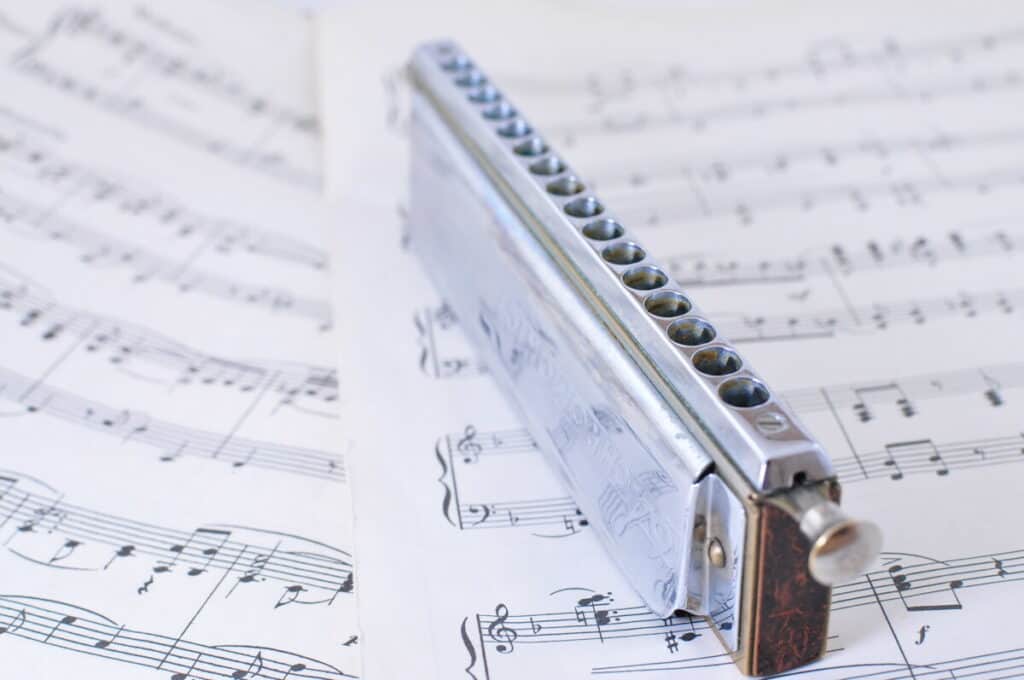
A skilled chromatic harmonica player has to pull and release the knob quickly to be able to play chromatic notes in quick succession.
In my opinion, the regular diatonic harmonica (the one you’ve probably seen a million times) is a very challenging instrument to play requiring mouth muscles (yeah you heard me. Try doing pitch bends for a while and you’ll see what I mean), breath endurance, and a high amount of coordination.
The chromatic harmonica takes this to the next level of difficulty by adding the ability to play all the notes of the scale.
Bass Harmonica
Y’all, there IS such a thing as a bass harmonica, and I can’t tell you how much I want it.
It has such an amazing, deep, tough sound.
I admit it looks kind of absurd. It looks like you’re playing a VHS rewinder–but it works the same as a regular diatonic harmonica, except that you only blow into the instrument, and you don’t inhale (called “draw” by harmonica players).
If any of you have a bass harmonica and want to get rid of it. Please let me know, I’ll gladly take it off your hands.
Tremolo
There’s a special type of harmonica called tremolo harmonica that you may never have seen before, but it’s likely you’ve heard it.
This video is from Ben Hewlett who actually teaches harmonica online (I’ve actually taken his courses on Udemy and they are EXCELLENT. You can find more about it here)
Ben demonstrates the Tremolo harmonica here.
The tremolo has twice the holes as a diatonic harmonica, and you are intended to play through two holes at once at any given time. The sound channels together create a tremolo effect, which sounds like a chorus of harmonicas rather than just a single.
The same principles for a standard harmonica apply, you inhale and exhale air over free reeds which vibrate, creating the sound.
Reed Instruments: Instruments that use a vibrating reed to produce the sound
Saxophone
You may be thinking… okay, we’ve departed very far from harmonicas now, and yes, a saxophone is not a free-reed instrument, but it is a reed instrument, which means that the same principle applies to a harmonica where a vibrating reed causes air to rapidly enter and exit creating a distinct sound depending on the shape of the chamber.
A saxophone player places the mouthpiece in their mouth and blows carefully so their air vibrates the reed against the opening of the saxophone which creates a standing column of air pressure within the instrument. The saxophone player then opens and closes valves on the saxophone to change the shape of the air chamber and this changes the pitch of the instrument
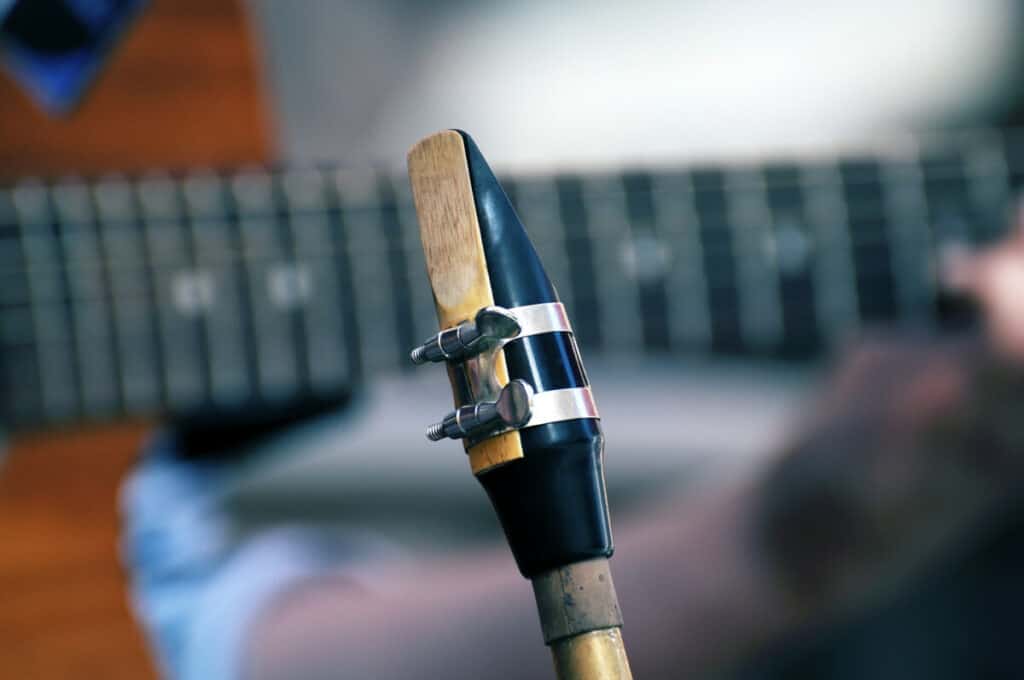
So, although it seems very different from a harmonica, the reed in a saxophone makes it more similar to a harmonica than most people realize.
Clarinet
The saxophone’s moodier, older, and more refined cousin the clarinet is also a reed instrument, and in principle works identically to a saxophone, with a vibrating reed creating a column of air pressure within the clarinet.
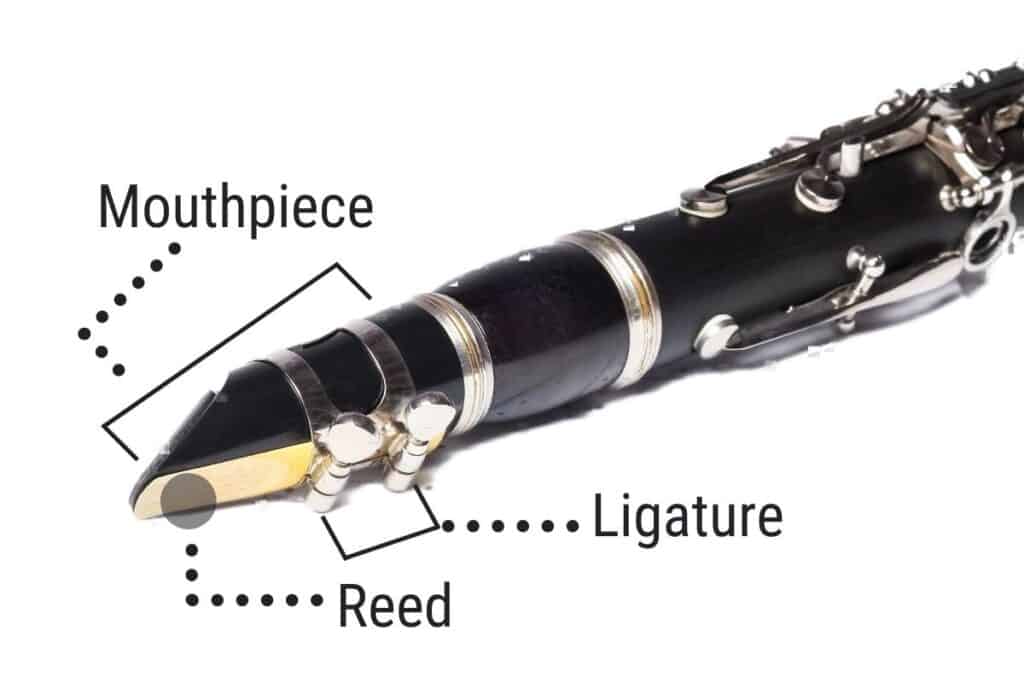
Perhaps you thought a clarinet was some type of flute! An easy misconception. Do you want to see the differences between a clarinet and a flute? Make sure and check out my article here.
